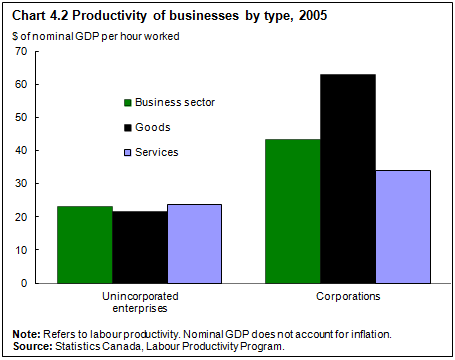Incorporated businesses have higher labour productivity
Archived Content
Information identified as archived is provided for reference, research or recordkeeping purposes. It is not subject to the Government of Canada Web Standards and has not been altered or updated since it was archived. Please "contact us" to request a format other than those available.
Related information
Businesses that are incorporated have significantly higher rates of labour productivity than those that are not. Labour productivity is measured by output per hour worked, and is an indicator of how efficiently businesses use labour in the production process. In 2005, output per hour worked was nearly twice as much for corporations ($43.40) than for unincorporated enterprises ($23.20).
Most corporations are larger businesses, which are better suited to increase productivity by using more capital per worker and by exploiting their larger workforces, which reduces costs per unit. Corporations in goods-producing industries tend to use more capital per worker, especially in manufacturing and in mining and oil and gas, where unincorporated enterprises are far less common. In the services industries, unincorporated businesses tend to be concentrated in services that use less capital per worker (including financial services, health services and professional services), while corporations are more concentrated in services that use more capital per worker (including transportation and telecommunications).

- Date modified:
